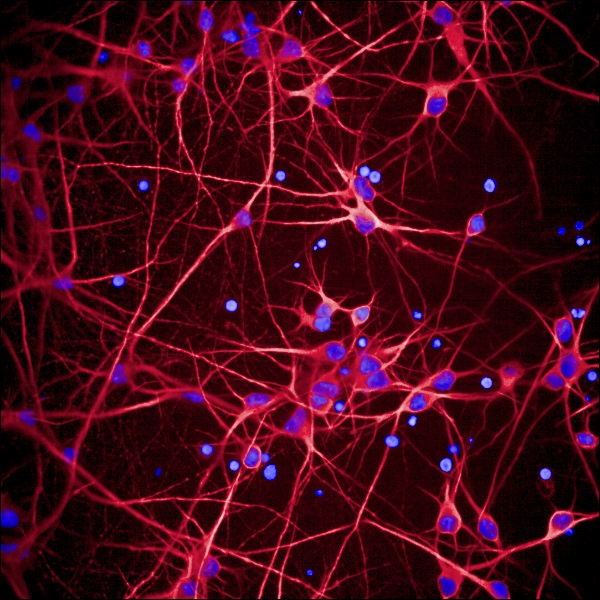BMBF funds project with 1.2 million Euro - UKE and Fraunhofer IME continue drug development against multiple sclerosis
The University Medical Center Hamburg-Eppendorf (UKE) and the Fraunhofer Institute for Molecular Biology and Applied Ecology IME want to pave the way for new therapies against multiple sclerosis. The aim of a joint project is to characterize a target protein and further develop suitable drug candidates that specifically prevent the injury of nerve cells, which is responsible for the progressive disability in multiple sclerosis. The project is funded with 1.2 million Euro by the German Federal Ministry of Education and Research as part of a program for the validation of disease-related target structures.

Multiple sclerosis (MS) is the most frequent chronic inflammatory disease of the central nervous system, affecting approximately 2.5 million people worldwide. “Available MS therapies are directed exclusively against the inflammatory response with only limited efficacy on progressive disability”, says Prof. Dr. Manuel Friese, Head of the Institute of Neuroimmunology and Multiple Sclerosis (INIMS) at the UKE.
Therapeutics against nerve cell injury
The ion channel transient receptor potential melastatin 4 (TRPM4) is involved in the inflammatory-mediated demise of nerve cells. Ion channels are proteins that enable charged molecules to pass through cell membranes. The role of TRPM4 in MS was first described in Prof. Friese's group at the INIMS. In nerve cells, the channel exhibited increased, inflammation-mediated activity and contributed to the death of the nerve cells. If the channel is blocked, the extent of cell damage can be reduced. The aim of the BMBF project is now to learn more about TRPM4 as a possible target structure and its existing drug candidates in order to specifically reduce the nerve damage responsible for the progressive disability in MS.
The collaborative project is jointly realized by the UKE and Fraunhofer IME ScreeningPort. In order to enable later clinical studies, the institutions are investigating the molecular properties of TRPM4 and its drug candidates also in various preclinical models. “The aim of the project is to validate TRPM4 as a suitable target structure for the newly developed drug candidates, which will be developed into the first MS therapeutics available on the market to prevent nerve cell injury”, says project coordinator Dr. Philip Gribbon from Fraunhofer IME ScreeningPort, describing the longer-term goal. “With this project, we want to take an academic idea to marketability of a new therapeutic agent and thus actively bridge basic research and clinical application.”
About the Fraunhofer Institute for Molecular Biology and Applied Ecology IME
The Fraunhofer Institute for Molecular Biology and Applied Ecology IME, with over 530 employees at its six sites in Schmallenberg, Aachen, Gießen, Münster, Frankfurt/Main and Hamburg conducts research in the field of applied life sciences from a molecular level to entire ecosystems, in the areas of pharmacy, medicine, chemistry, agriculture, as well as environmental and consumer protection. Our mission is the development and use of novel technologies for diagnosis and therapy of human and animal diseases as well as the protection of crop plants and food sources.
Fraunhofer IME ScreeningPort in Hamburg contributes with its expertise in assay development and drug discovery. For more information, see:
www.ime.fraunhofer.de/en/Research_Divisions/business_fields_TM/screeningport.html
 Fraunhofer Institute for Molecular Biology and Applied Ecology IME
Fraunhofer Institute for Molecular Biology and Applied Ecology IME